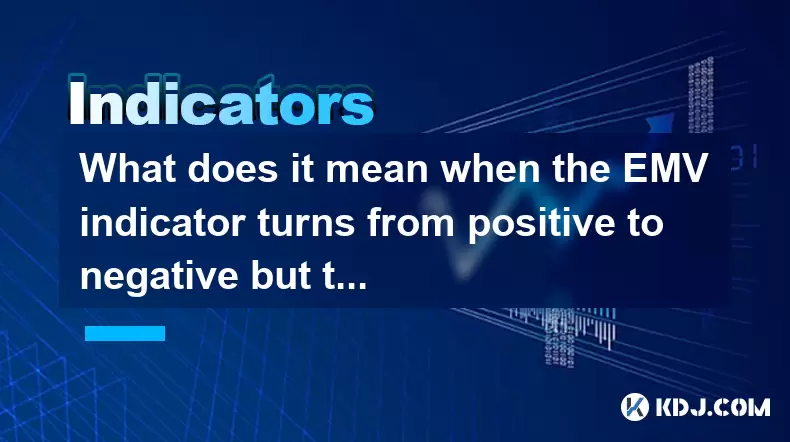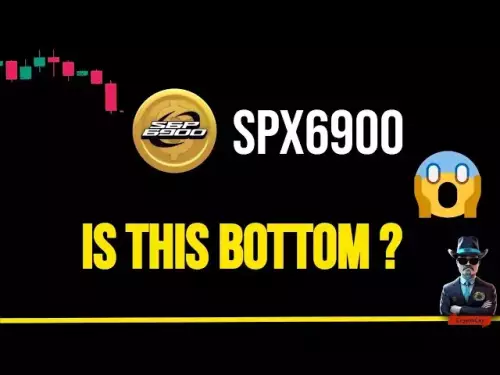-
 Bitcoin
Bitcoin $114600
-0.43% -
 Ethereum
Ethereum $4933
3.82% -
 XRP
XRP $3.108
2.91% -
 Tether USDt
Tether USDt $0.9999
0.03% -
 BNB
BNB $880.4
-0.16% -
 Solana
Solana $211.3
3.62% -
 USDC
USDC $0.0000
0.01% -
 Dogecoin
Dogecoin $0.2412
1.81% -
 TRON
TRON $0.3679
1.80% -
 Cardano
Cardano $0.9431
3.38% -
 Chainlink
Chainlink $26.41
1.18% -
 Hyperliquid
Hyperliquid $46.23
3.93% -
 Sui
Sui $3.791
2.41% -
 Stellar
Stellar $0.4209
1.60% -
 Ethena USDe
Ethena USDe $1.000
0.01% -
 Bitcoin Cash
Bitcoin Cash $597.9
1.86% -
 Avalanche
Avalanche $26.46
2.90% -
 Hedera
Hedera $0.2565
2.52% -
 Litecoin
Litecoin $123.6
2.35% -
 UNUS SED LEO
UNUS SED LEO $9.595
0.49% -
 Toncoin
Toncoin $3.386
0.53% -
 Shiba Inu
Shiba Inu $0.00001336
1.10% -
 Uniswap
Uniswap $11.39
0.93% -
 Polkadot
Polkadot $4.253
2.32% -
 Aave
Aave $357.1
1.31% -
 Cronos
Cronos $0.1614
3.13% -
 Bitget Token
Bitget Token $4.730
0.79% -
 Dai
Dai $0.9999
-0.01% -
 Monero
Monero $283.1
6.99% -
 Pepe
Pepe $0.00001137
0.81%
What does it mean when the EMV indicator turns from positive to negative but the price doesn't fall?
When the EMV turns negative but price holds steady, it signals weakening momentum despite lack of immediate decline—often due to institutional support or positive news overriding technicals.
Aug 11, 2025 at 05:43 am

Understanding the EMV Indicator and Its Significance
The Ease of Movement Value (EMV) is a technical indicator designed to measure the relationship between volume and price change. It helps traders identify the strength behind price movements by factoring in both volume and the distance price moves. When the EMV turns from positive to negative, it typically signals that the upward momentum is weakening. This shift suggests that even though the price might still be rising or holding steady, the ease with which it is moving upward has diminished. The negative EMV indicates that volume is not supporting the current price level, which could foreshadow a reversal.
However, the market does not always react immediately to indicator signals. A situation where the EMV becomes negative but the price remains stable or continues rising can occur due to delayed reactions, market inertia, or strong external buying pressure. This divergence between the EMV and price action is a critical point of analysis for traders using momentum-based strategies.
Why Price May Not Fall Despite a Negative EMV Signal
One reason the price does not fall immediately after the EMV turns negative is the presence of strong institutional buying or large pending orders that continue to support the asset’s value. These orders can maintain or push the price higher, even when retail momentum and volume are declining. In such cases, the negative EMV reflects reduced ease of upward movement, but the actual price is still being propped up by deeper market forces.
Another explanation lies in market sentiment and news events. Positive developments such as regulatory approvals, exchange listings, or macroeconomic shifts can override technical signals. For example, if a major exchange announces support for a cryptocurrency, the resulting surge in confidence may keep the price elevated despite weakening momentum indicated by the EMV.
Additionally, lagging volume patterns can create temporary mismatches. The EMV is highly sensitive to volume changes. If volume drops sharply after a rally, the indicator turns negative quickly, but the price may not adjust instantly. This delay allows the price to remain flat or even rise slightly before reflecting the loss of momentum.
How to Interpret Divergence Between EMV and Price
When the EMV crosses below zero while the price continues to rise or stabilize, this forms a bearish divergence. This scenario suggests that although the price is not yet falling, the underlying strength of the uptrend is eroding. Traders should pay close attention to this signal, especially if it persists over multiple periods.
To assess this divergence effectively:
- Monitor the slope of the EMV line—a steep decline into negative territory signals stronger momentum loss.
- Compare the current price level with recent volume levels using tools like On-Balance Volume (OBV) or Volume Weighted Average Price (VWAP).
- Look for confirmation from other oscillators such as RSI or MACD to see if they also show weakening momentum.
- Examine candlestick patterns for signs of exhaustion, such as long upper wicks or doji formations.
This multi-indicator approach increases the reliability of the EMV signal and helps avoid premature conclusions based on a single data point.
Step-by-Step Analysis of EMV and Price Behavior
When you observe the EMV turning negative without a price drop, follow these steps to analyze the situation:
- Open your trading chart on a platform like TradingView or MetaTrader and apply the EMV indicator with default settings (typically a 14-period calculation).
- Identify the exact candle where the EMV crosses below the zero line.
- Check the corresponding volume bar for that period—look for a noticeable decrease compared to previous bullish candles.
- Zoom out to view the broader trend—determine whether the asset is in an overbought condition using RSI above 70.
- Overlay a moving average (e.g., 50-period EMA) to assess whether the price is still above key support levels.
- Watch for upcoming resistance zones where selling pressure might accumulate.
- Set up alerts for breakouts below recent swing lows or volume spikes that could confirm a reversal.
This structured approach ensures you don’t act solely on the EMV signal but incorporate context from volume, trend, and market structure.
Practical Trading Implications and Risk Management
Even when the EMV turns negative, entering a short position immediately can be risky if the price shows no signs of reversal. Instead, traders should use this signal as a warning to tighten risk parameters. For instance:
- Reduce position size on any new long entries.
- Move stop-loss orders closer to entry points to protect profits.
- Avoid adding to existing long positions until the EMV shows signs of stabilization or recovery.
- Consider hedging with options or futures if available on the asset.
- Wait for price to break below a recent consolidation low before confirming a downtrend.
The negative EMV serves as an early alert, not a definitive sell signal. Proper risk management ensures that you are not caught off guard if the price eventually reverses after a prolonged sideways movement.
Common Misinterpretations of the EMV Indicator
Many traders assume that a negative EMV automatically means a price drop is imminent. This is a misconception. The EMV measures the ease of movement, not direction. A negative reading simply means that price is moving upward with difficulty or downward with ease. It does not guarantee a reversal.
Another common error is ignoring the timeframe. On lower timeframes like 5-minute or 15-minute charts, the EMV can fluctuate rapidly due to short-term volume spikes. A single negative bar may not be meaningful without confirmation over several periods.
Lastly, traders often fail to adjust the EMV period length based on market conditions. During high volatility, a shorter period (e.g., 9) may provide more responsive signals, while in ranging markets, a longer period (e.g., 20) can filter out noise.
Frequently Asked Questions
Can the EMV indicator give false signals in sideways markets?
Yes, in ranging or choppy markets, the EMV frequently crosses the zero line without leading to sustained price moves. This happens because volume fluctuates unpredictably, causing the indicator to oscillate. To reduce false signals, combine EMV with a trend filter like ADX above 25 to confirm whether the market is trending.
Should I use EMV alone to make trading decisions?
No, the EMV should not be used in isolation. It works best when combined with volume analysis, price action, and other momentum indicators. Relying solely on EMV increases the risk of entering trades based on premature or misleading signals.
How do I adjust the EMV settings for different cryptocurrencies?
Adjust the period length based on volatility. For highly volatile assets like meme coins, use a shorter period (e.g., 9) to capture rapid momentum shifts. For more stable assets like Bitcoin, a 14 or 20-period setting may be more appropriate. Test settings in a demo environment before live trading.
Does the EMV work the same way on all timeframes?
The core calculation remains consistent, but the interpretation varies by timeframe. On higher timeframes (daily, weekly), EMV signals are more reliable and less noisy. On lower timeframes, signals appear more frequently but require stricter confirmation due to increased volatility and noise.
Disclaimer:info@kdj.com
The information provided is not trading advice. kdj.com does not assume any responsibility for any investments made based on the information provided in this article. Cryptocurrencies are highly volatile and it is highly recommended that you invest with caution after thorough research!
If you believe that the content used on this website infringes your copyright, please contact us immediately (info@kdj.com) and we will delete it promptly.
- Rare Find: The 1-Cent Coin Worth €6,000!
- 2025-08-25 02:45:28
- Hacktivism, Tokenization, and the Decentralized Future: A New Yorker's Take
- 2025-08-25 02:45:28
- UNI Price Gears Up for New Cycle: Analyst Outlook Bullish
- 2025-08-25 02:50:11
- BlockchainFX, Polkadot, Stellar: Unveiling 2025's Crypto Opportunities
- 2025-08-25 03:25:27
- Pi Coin Price Patterns: Decoding the Hype and Reality
- 2025-08-25 03:30:12
- Pepe Crypto: Price Predictions and Long-Term Investment Potential - A NYC Perspective
- 2025-08-25 03:05:12
Related knowledge

What does it mean when the +DI and -DI cross frequently in the DMI indicator but the ADX is flattening?
Aug 11,2025 at 03:15am
Understanding the DMI Indicator ComponentsThe Directional Movement Index (DMI) is a technical analysis tool composed of three lines: the +DI (Positive...

What does the sudden appearance of a "dark cloud cover" candlestick pattern during an uptrend indicate?
Aug 13,2025 at 11:35am
Understanding the 'Dark Cloud Cover' Candlestick PatternThe dark cloud cover is a bearish reversal pattern in technical analysis that typically appear...

What does it mean when the moving average, MACD, and RSI all send buy signals simultaneously?
Aug 11,2025 at 01:42pm
Understanding the Convergence of Technical IndicatorsWhen the moving average, MACD, and RSI all generate buy signals at the same time, traders interpr...

What does it mean when both the KDJ indicator and the RSI show overbought signals simultaneously?
Aug 13,2025 at 11:35am
Understanding the KDJ Indicator in Cryptocurrency TradingThe KDJ indicator is a momentum oscillator derived from the Stochastic Oscillator, widely use...

What does it mean when the price is trading above the SAR indicator but the red dots are densely packed?
Aug 09,2025 at 11:49pm
Understanding the SAR Indicator and Its Visual SignalsThe SAR (Parabolic Stop and Reverse) indicator is a technical analysis tool used primarily to de...

What does it mean when the candlestick chart forms a "Morning Star" but trading volume is sluggish?
Aug 12,2025 at 06:28pm
Understanding the Morning Star Candlestick PatternThe Morning Star is a three-candle bullish reversal pattern commonly observed in cryptocurrency pric...

What does it mean when the +DI and -DI cross frequently in the DMI indicator but the ADX is flattening?
Aug 11,2025 at 03:15am
Understanding the DMI Indicator ComponentsThe Directional Movement Index (DMI) is a technical analysis tool composed of three lines: the +DI (Positive...

What does the sudden appearance of a "dark cloud cover" candlestick pattern during an uptrend indicate?
Aug 13,2025 at 11:35am
Understanding the 'Dark Cloud Cover' Candlestick PatternThe dark cloud cover is a bearish reversal pattern in technical analysis that typically appear...

What does it mean when the moving average, MACD, and RSI all send buy signals simultaneously?
Aug 11,2025 at 01:42pm
Understanding the Convergence of Technical IndicatorsWhen the moving average, MACD, and RSI all generate buy signals at the same time, traders interpr...

What does it mean when both the KDJ indicator and the RSI show overbought signals simultaneously?
Aug 13,2025 at 11:35am
Understanding the KDJ Indicator in Cryptocurrency TradingThe KDJ indicator is a momentum oscillator derived from the Stochastic Oscillator, widely use...

What does it mean when the price is trading above the SAR indicator but the red dots are densely packed?
Aug 09,2025 at 11:49pm
Understanding the SAR Indicator and Its Visual SignalsThe SAR (Parabolic Stop and Reverse) indicator is a technical analysis tool used primarily to de...

What does it mean when the candlestick chart forms a "Morning Star" but trading volume is sluggish?
Aug 12,2025 at 06:28pm
Understanding the Morning Star Candlestick PatternThe Morning Star is a three-candle bullish reversal pattern commonly observed in cryptocurrency pric...
See all articles

























































































